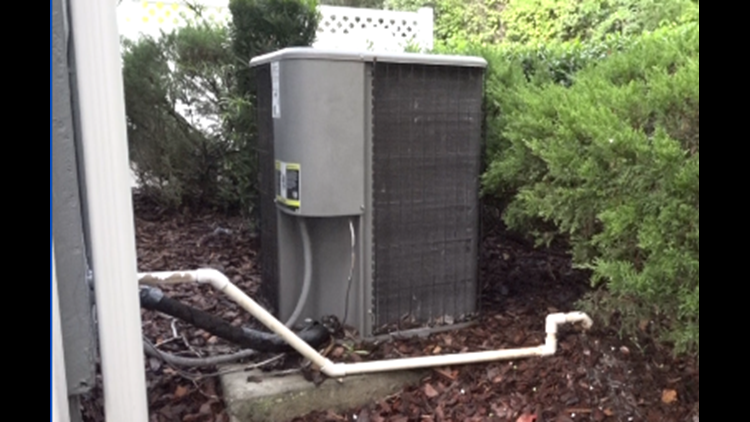JACKSONVILLE, Fla — As the heat of summer continues, First Coast residents are naturally spending much of their time in the indoor refuge of air conditioning. But, depending on the type of AC you have in your home, your system could be a COVID-19 risk hazard.
“You have to bring air from outside in and exchange that air at least six volumes per hour,” UF Health infectious disease specialist Dr. Frederick Southwick told First Coast News in an interview Wednesday.
Southwick said operating rooms often require an exchange of eight volumes per hour during surgery. Each volume represents a complete exchange of the amount of air it takes to fill a particular room or house.
“Imagine when you smell food,” Southwick said. “You’re smelling aerosol. In a closed room that aerosol will build up.”
He was likening that aerosol to what humans exhale every time we talk or breathe – let alone cough or sneeze.
“And unfortunately, when a lot of people sit in a small room when they’re talking they produce droplets but they also produce aerosol,” he said.
While these facts have gradually become common knowledge, what’s less clear is which air conditioning and home ventilation features are most effective at reducing the risk of spreading coronavirus throughout a house. It’s important because, as Southwick said, “Even if you’re six feet away, you could be breathing it in.”
Tim Wood of Snyder Air Conditioning in Jacksonville said he’s heard a lot of questions from customers about the topic in the last five or six months.
“There is definitely a concern there, for sure,” he said.
Wood explained that commercial buildings are legally required to be equipped with ventilation systems that exchange air with the outdoors, but many homes have systems that don’t.
“In the past five to seven years you see a lot more of it, anything [older than] that probably does not have any fresh air intake,” he said.
Another variable is whether a system allows individual rooms to be isolated, which Wood suggested could conceivably reduce spread risk in a home where one person is infected but others are not.
But he pointed out that, contrary to some belief, the strength of the filter you use in your air conditioning system – indicated by what’s called a “MERV” rating – is an effective barrier to COVID-19. While it does affect the number of tiny particulates, such as dust and pollen in your home, “It’s really not [going to make a difference with COVID],” Wood confirmed.
He also cautioned that denser filters can force a system to work harder, “because it’s trying to breathe through something that’s a tighter weave.”
What he said has been proven to make a difference against the spread of flu viruses is an ultraviolet light kit that can be installed with any system, attached to the coil where the air is forced through. But there were at least two caveats: Wood said the cost of the mechanism is usually between $500 and $1,000, and, “unfortunately nothing has been tested specifically for COVID-19 yet.”
But at least one example from the medical community is encouraging.
“We’re using [ultraviolet light] to disinfect surfaces a lot in the hospital,” internist Dr. Jennifer Cowart told First Coast News. She said that includes patient rooms, workrooms, phones, and face shields.
As for the effectiveness in home heating/ventilation/air conditioning (HVAC) systems, Cowart said, “I would like to see the studies on it but I think there’s at least a possibility that that could be helpful.”
Ultimately, Wood said, the only certain way to avoid the spread of COVID-19 inside a home is to prevent its entry altogether, but he acknowledged that that can be difficult to be sure of.
“It won’t be there unless somebody brings it in,” Wood said.



